Camping is a wonderful way to explore the great outdoors and create fun memories. But getting into camping can seem daunting and a bad experience can easily put people off. So here are some simple tips on how to best prepare for a camping trip and why it’s such a popular and enjoyable activity. If you’re looking for what equipment to take, then check out the Ultimate Camping Packing List.
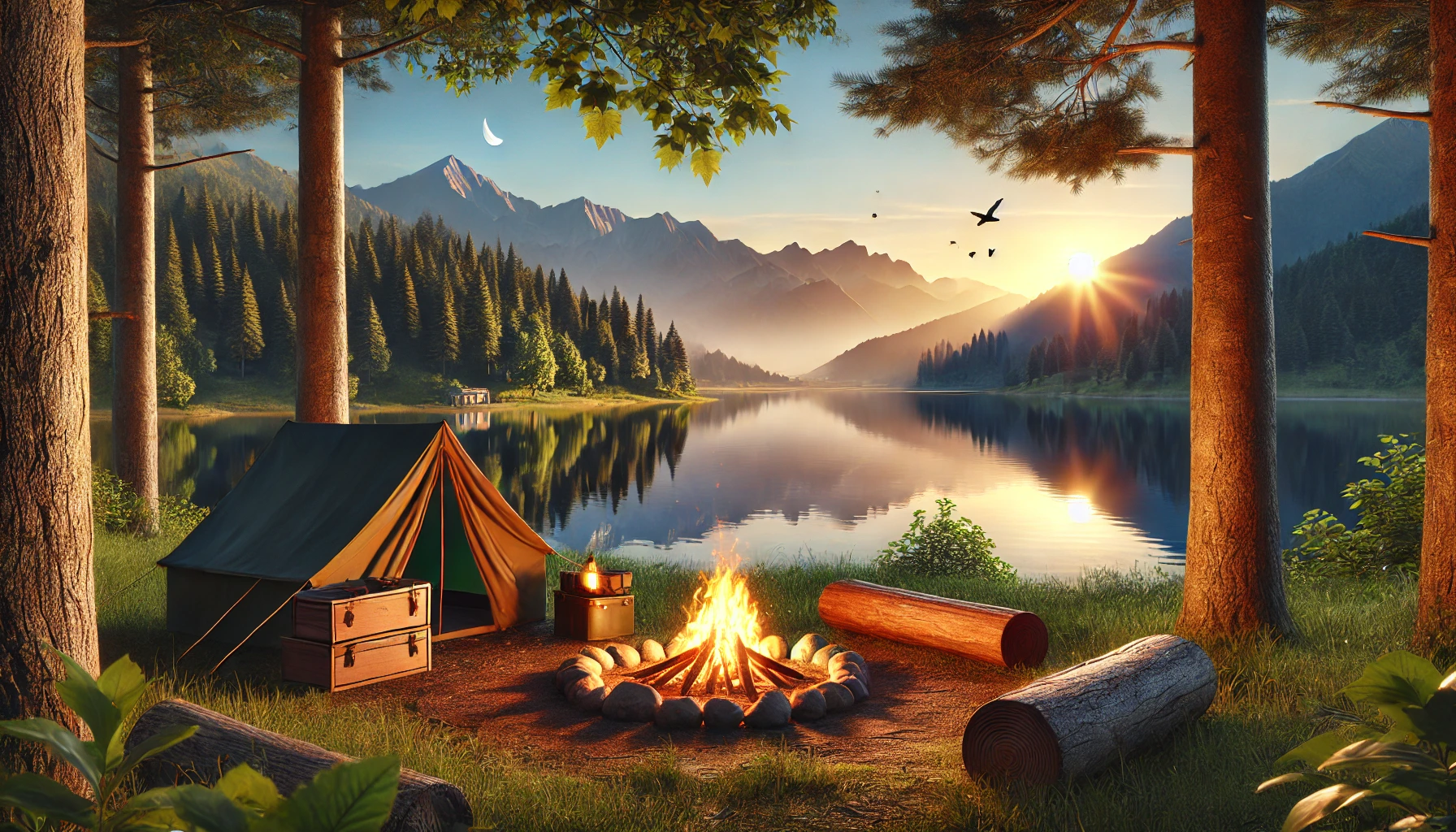
Camping & Trekking Tips for Beginners
Camping and trekking can be an amazing experience, but preparation is key, especially for beginners. Here are 8 essential tips:
1. Plan & Prepare
- Research the Location: Know the weather, terrain, altitude, and potential risks.
- Check Permits & Regulations: Some areas require permits or have restrictions for campers.
- Inform Someone: Share your itinerary with a friend or family member just in case of emergency.
- Start Small: If you’re new, try a short overnight trip before a long trek with someone who’s camped before.
Finding the right camping spot is harder than it sounds whether at a campsite or wild camping. Especially when camp trekking in the mountains, it’s good to know the trails to and from the researched location. And try to find a place with a running water-source and some shelter from the elements.
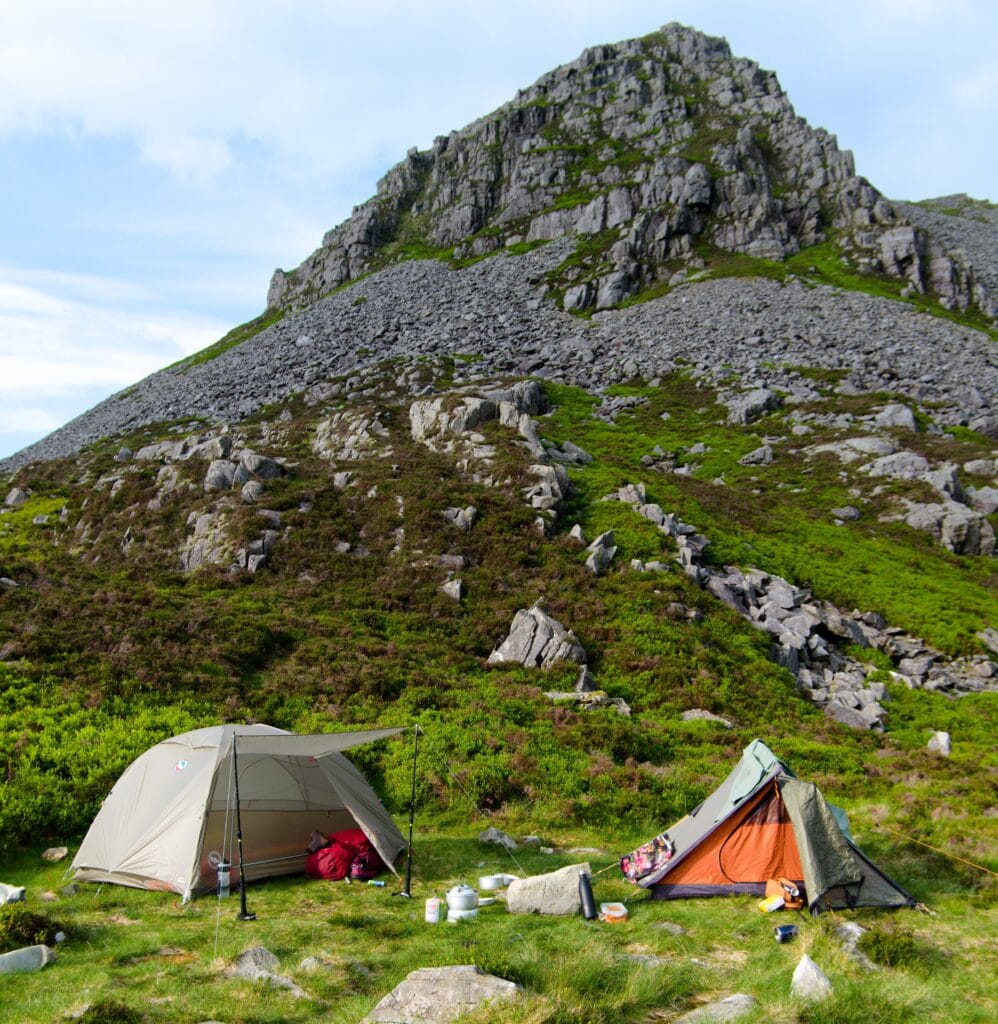
2. Pack Smart & Light
- Follow the Ultimate Packing List: Take only what you need and avoid overpacking, especially if hiking with the camping gear. My favourite tent is the Big Agnes Copper Spur series.
- Use the Layering System: Pack moisture-wicking base layers, an insulating mid-layer, and a waterproof outer layer. These versatile clothes will help adapt to all weather and temperatures.
- Break in Your Gear: Test your backpack, boots, tent and sleeping system before the trip.
Getting a good night’s sleep outside can be difficult and will mainly depend on your equipment. Luckily, to get started it’s pretty affordable to buy a tent, sleeping bags, matts and a backpack! The more expensive gear will give you greater warmth, comfort versatility and reduce the weight generally. It’s a good idea to practise using your gear before heading off on an adventure. This can be as simple as spending a night in the garden to figure out how to pitch and pack away the tent and equipment.
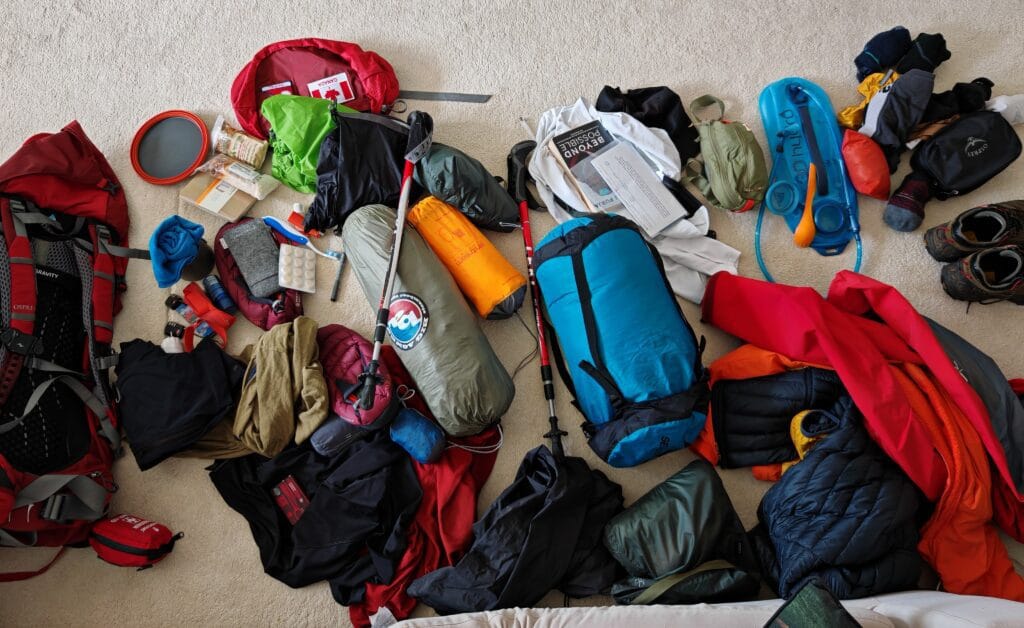
3. Choose the Right Campsite
- Look for Flat Ground: Avoid slopes or hills but if unavoidable, put your head uphill. And don’t pitch in areas prone to flooding.
- Check for Wind Protection: Pitch your tent near natural windbreaks (like trees or rocks). From experience, stong winds and exposed camps are not a good combination!
- Avoid Water Sources: Camp at least 200 feet (60m) from lakes and streams to prevent contamination.
- Beware of Wildlife Trails: Avoid areas with animal tracks or signs of activity. Check with local rangers or boards for reports of wildlife.
Once you rock up at camp, the fun begins to find a suitable spot to pitch. From learning the hard-way, find somewhere with shelter and always choose wind protection over a view! The strong winds in Patagonia almost broke my tent and forced me to re-pitch at 3am in darkness to get some shelter and sleep.
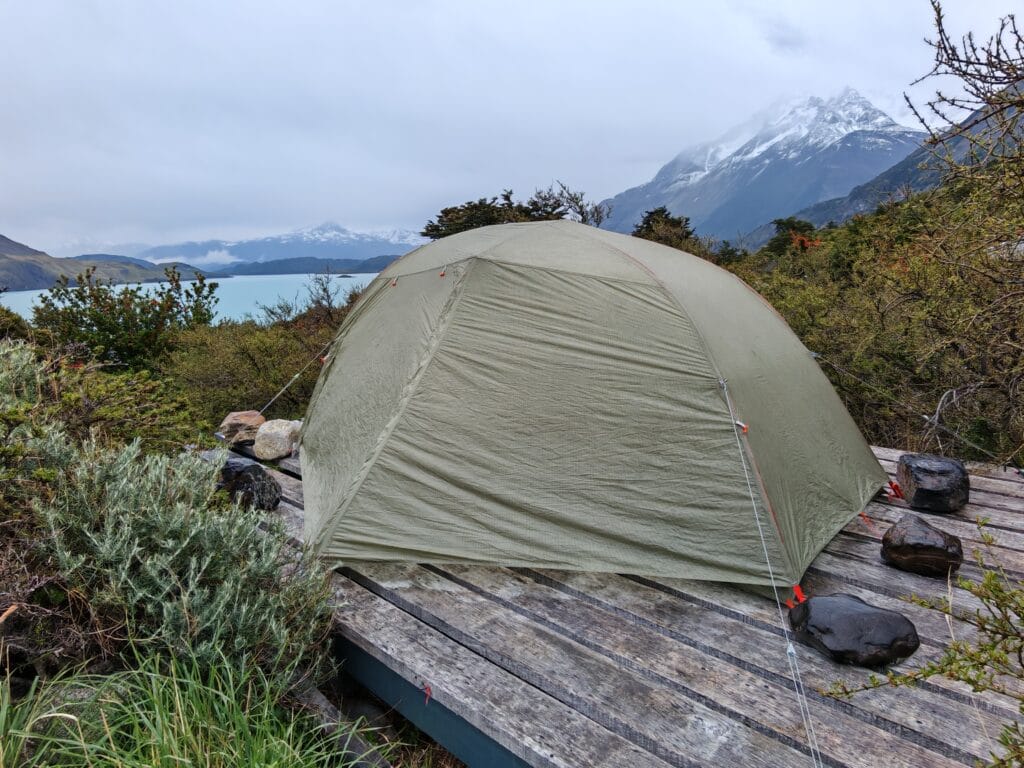
4. Stay Safe on the Trail
- Pace Yourself: Take regular breaks when hiking, stay hydrated and fuelled when carrying camping gear. And don’t push too hard as once at camp, you’re unlikely to be staying too far away.
- Use Trekking Poles: They help with stability and reduce joint strain. Plus can be used for awning versitbules.
- Stay on Marked Trails: Straying off can lead to getting lost or harming the environment. Have a map handy!
- Check the Weather: Sudden changes can be dangerous in the mountains and can ruin a planned campsite.
It’s best to not challenge yourself too much when starting out camping. If you’re need a guide on what equipment to take then check our the Hiking Packing List and Trekking Packing List.
5. Master Basic Camping Skills
- Practice Setting Up Your Tent: Do it at home before your trip. I regualry pratice in the garden as when conditions are poor or you’re tired on the trail, it helps knowing how to pitch the tent.
- Learn How to Purify Water: Use filters, tablets, or boil water for safety.
- Start a Campfire Safely: Follow regulations, use dry wood, and fully extinguish before sleeping. Fine an area protected from wind and check rules on fires beforehand.
- Cook Simple Meals: Choose easy-to-make, lightweight foods like dehydrated meals, pasta or instant noodles. For breakfast, porridge is fast and filling before leaving camp. And bring a mug for teas and coffees.
It’s wise to start off small and simple. If you think like a sports game, you want to do some training before the game! The worst is trying to workout how to pitch a new tent in windy and rainy conditions when you’re tired or worse in the dark. So practise pitching and rolling up the tent and how best t pack all your camping kit into a backpack.
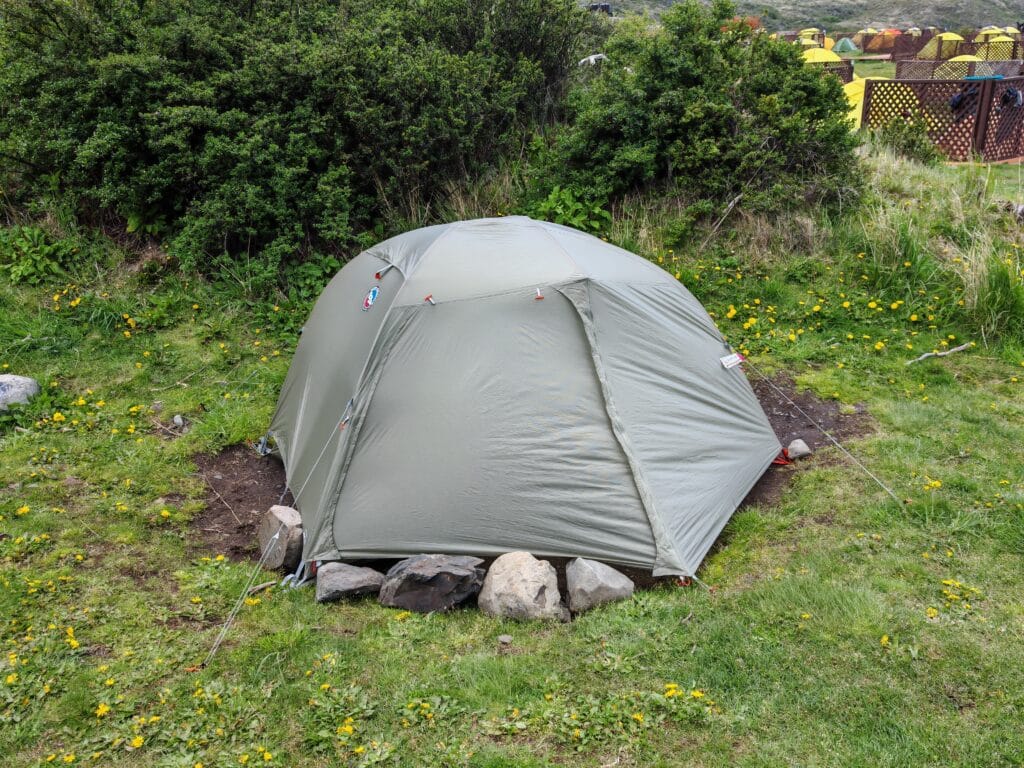
6. Follow Leave No Trace Principles
- Carry Out All Rubbish: Leave the campsite cleaner than you found it.
- Use a Trowel for Waste: If no toilets are available, bury human waste 6-8 inches deep and 200 feet away from water sources.
- Respect Wildlife: Keep food stored properly and never feed animals.
The camping tips here are similar to the Wild camping advice given on the Camping Packing List Post. In summer time, it’s not unusual to see reports of people damaging the environment by camping and not respecting the nature. Follow the basic principles to not harm where you sleep and ruin it for other people or wildlife.
7. Be Ready for Emergencies
- Take a First-Aid Kit: Include bandages, antiseptic, painkillers, and personal medications.
- Know Basic Navigation: Learn how to use a map, compass, or GPS device.
- Have an Emergency Plan: Know what to do if you get lost or injured.
- Carry a Whistle & Signal Mirror: These can help rescuers locate you.
No one ever plans to have an accident but these things do occur. Ever hike I do, I carry a 1st Aid Kit and luckily have never used it and have a whistle as part of my Osprey bags. If you are wild camping, then remember to tell somewhere where you plan on staying and the route to get there just in case emergency rescue is needed.
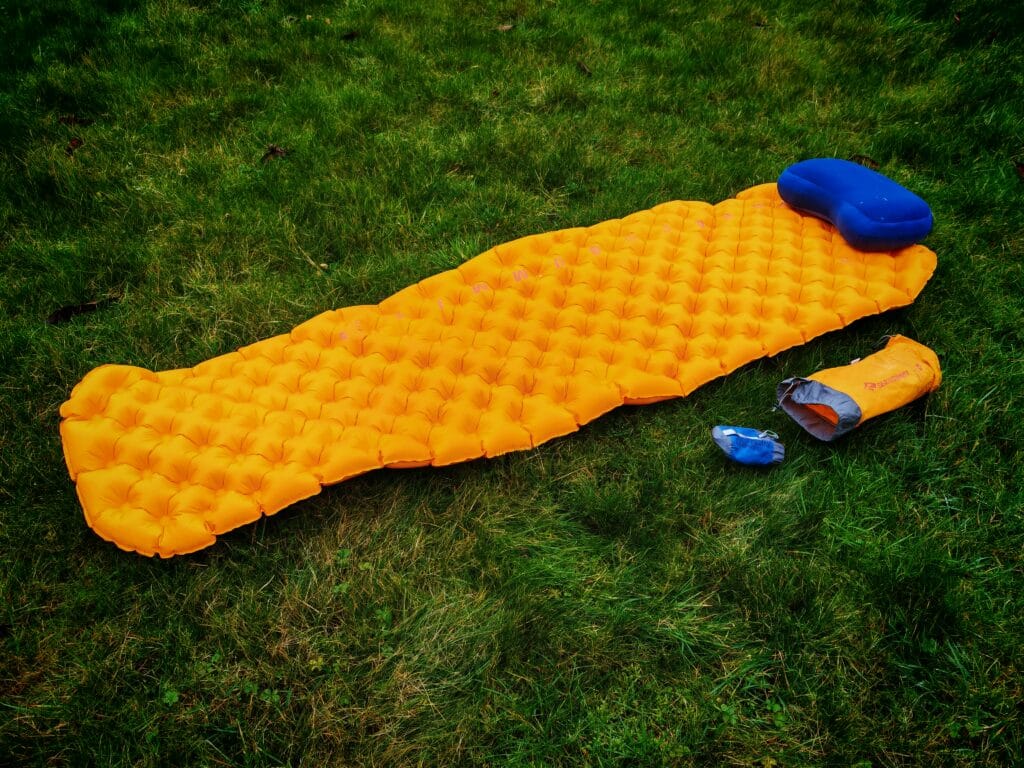
8. Get Comfortable Sleeping Outdoors
- Choose the Right Sleeping Bag: Ensure it’s rated for the expected temperatures. A 4 season sleeping bag is great for winter but an oven in summer.
- Use a Sleeping Pad: An inflatable matt provides insulation and comfort. Use an inflatable pillow too!
- Wear Dry Clothes to Sleep: Change out of sweaty clothes before bed with specific nighttime clothes
- Use Earplugs & an Eye Mask: Helps block out noise from other campers or nature and early morning light.
Learning to get comfortable camping is tricky but not impossible! While a campervan or motorhome might be comforter and warmer, you don’t fell as connected to the outdoors than in a tent. And very much limits yourself to pre-existing camps near roads instead of getting into the wilderness.
Final Thoughts
These camping tips for new campers is a simple list to help guide you into good practises for camping. It’s a simple activity and can be as easy as booking a local campsite with all the facilities. To as extreme as weeks trekking and wild camping but everyone has to start somewhere! For more tips on Wild Camping, check out the Ultimate Camping Packing List Post.
What is your favourite place to camp? If you are enjoying the content, then please check out the other blog posts about camping and hiking. And please subscribe to The Journal – Monthly Newsletter to stay up to date with the latest Backpacker’s Mentality posts and tips